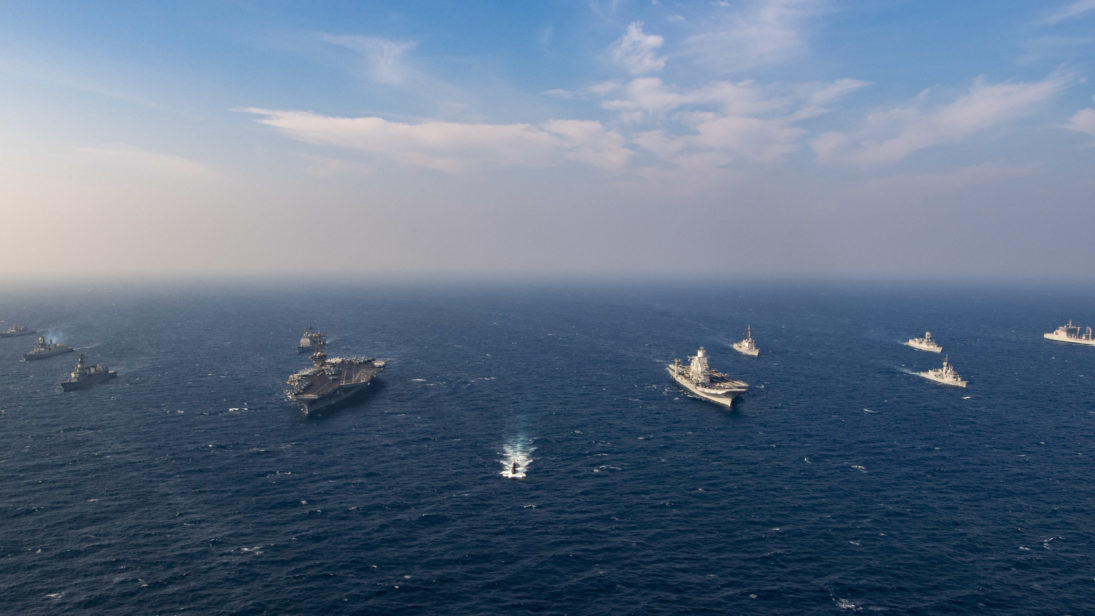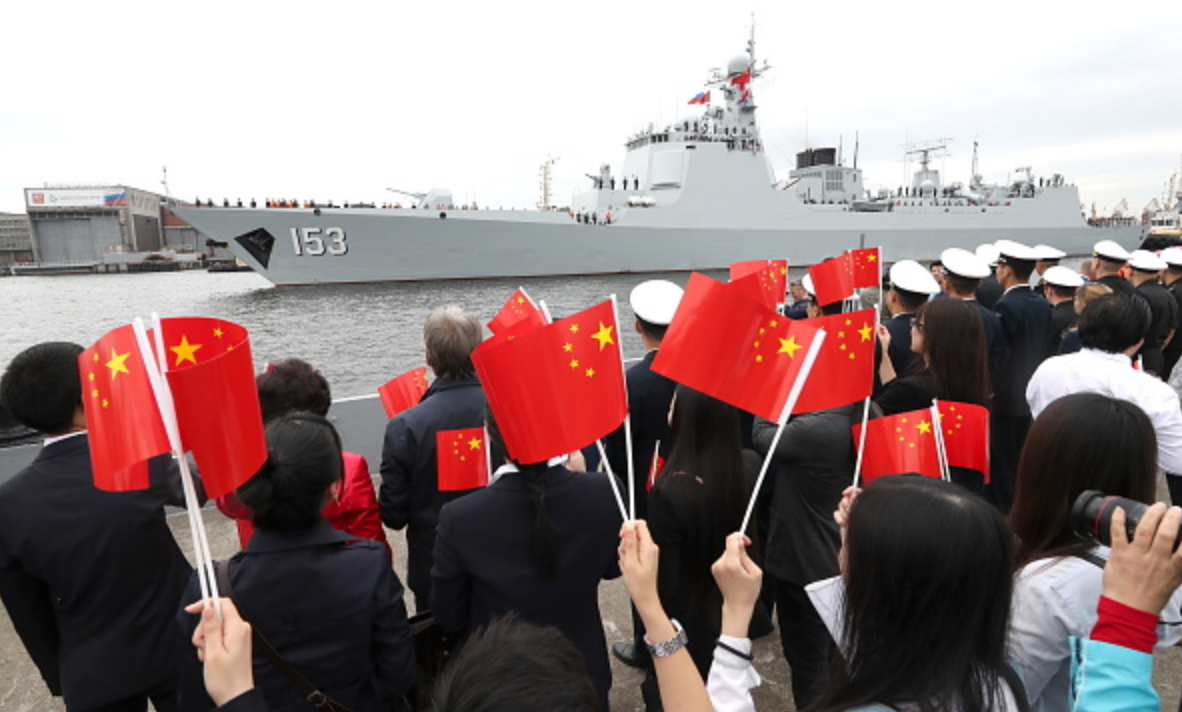
For centuries, the Bay of Bengal has served as a venue both for strategic rivalries and as a point of geographical connectivity for South Asian and Southeast Asian states. More recently, China’s unparalleled economic growth, India’s rise as a major regional power, and the emergence of developing nations in ASEAN with increasing energy demands, have all led to a recalibration of the importance of the Bay of Bengal.
The transformation of this littoral region as an economic and trading nexus has seen the Bay of Bengal’s sea lanes and their protection from both state and non-state actors become a priority for the governments of South Asia. Beijing too has become increasingly involved as the Bay leads to the Straits of Malacca and from there the South China Sea, where energy and trade exports crucial to the security of China’s economy are exported. With China taking a greater interest in the region’s security, traditional actors such as India and the United States are responding by increasing their maritime and economic presence, with a specific focus on balancing Beijing’s growing influence.
With China taking a greater interest in the region’s security, traditional actors such as India and the United States are responding by increasing their maritime and economic presence, with a specific focus on balancing Beijing’s growing influence.
China’s increasing presence in the Bay of Bengal
Through an increasingly assertive foreign policy, Beijing is embracing a “Look South” strategy, which can be seen through the twin-track process of widespread infrastructure investments across the Bay of Bengal via the Belt and Road Initiative (BRI) combined with a growing military presence in the form of the People’s Liberation Army Navy (PLAN).
Beijing claims its maritime interests in the eastern Indian Ocean are purely economic, but the need to provide security for both BRI investments and Chinese citizens has led to a growing military presence. Over the past two years, the PLAN has increasingly deployed warships and in December 2019 Chinese vessels even entered India’s special economic zone. Chinese submarine patrols in the Indian Ocean have also increased, particularly near the Andaman and Nicobar Islands, which are considered critical to New Delhi’s regional intelligence and monitoring operations.
Myanmar, Bangladesh, and Thailand have all signed arms deals to acquire Chinese made frigates and submarines for their respective navies, further increasing Beijing’s leverage within the region. The presence of a Chinese maritime reconnaissance and electronic intelligence station on Great Coco Island, however, gives Beijing a more direct and sustained presence in the Bay, alongside an advantage in monitoring traffic routes between the Strait of Malacca and the wider Indian Ocean. Crucially, the Coco Island facility helps China both observe in real-time Indian missile launching facilities on the Andaman and Nicobar Islands, as well as gives the PLAN a foothold to monitor the movements of the Indian Navy.

Alongside its naval deployments, the 21st Century Maritime Silk Road (MSR), an arm of President Xi Jinping’s wider BRI program, is leading to a substantial Chinese economic presence in the Bay. The Bangladesh China India Myanmar Economic Corridor (BCIMEC) and the China Indochina Peninsula Economic Corridor (CICPEC) will in the coming decade connect China’s Yunnan province directly via rail and road lines to South Asia’s maritime spaces. President Xi has also proposed nation-specific economic corridors, such as the China-Myanmar Economic Corridor (CMEC), alongside significant investments in oil and gas pipelines that will increase connectivity and link mainland China with the Indian Ocean, reducing its reliance on the Malacca Strait.
Through the MSR, China has invested heavily into the region’s physical infrastructure; specifically, this includes several strategic ports the Chittagong port in Bangladesh, the facilities on Ramree, Haigyi and Zadetkyi Kyun Islands in Myanmar, and further south, the Hambantota port in Sri Lanka. These projects, while civilian, are substantial in scope and offer logistic hubs from which China’s navy may look to operate shortly. These projects gift Beijing the potential to operate support facilities along the Bay of Bengal’s critical sea lanes and reinforce the already substantial leverage and influence Beijing has within the host countries and the wider region.
For their part, South Asian governments have broadly welcomed China’s investment programs and there is every indication that states within the Bay of Bengal will continue to rely on Beijing for infrastructure in the future, as recently seen in Bangladesh.
China’s increasing forays in the Bay of Bengal are also determined by strategic competition in the region with extra-regional actors. Under the banner of the Maritime Silk Road, Beijing has increased its military cooperation and conducted training exercises with Bangladesh, Myanmar, and Sri Lanka.
External rivalries with traditional security stakeholders
China’s increasing forays in the Bay of Bengal are also determined by strategic competition in the region with extra-regional actors. Under the banner of the MSR, Beijing has increased its military cooperation and conducted training exercises with Bangladesh, Myanmar, and Sri Lanka. Closer cooperation with armed forces of South Asian states is deemed critical to Beijing’s efforts to mitigate seaborne security threats to its investments on the Bay’s periphery. This has seen Beijing take an increased level of interest in aiding regional governments tackle maritime terrorism, piracy, drug smuggling, and human trafficking.
The United States and India, however, are both major naval actors in the area and have for decades been guarantors of the Bay’s security with both now seeking to challenge China’s presence in the littorals.
India, as the subcontinent’s largest military actor, considers itself to be the Bay of Bengal’s primary security guarantor and has under Prime Minister Narendra Modi prioritized closer economic ties with South Asian states to balance China’s trade advantage. For its part, New Delhi has shown itself eager to build what it refers to as the “Bay of Bengal community,” envisaging greater security cooperation amongst the littoral nations through BIMSTEC.
India is further augmenting its diplomatic strategy in South Asia with increased levels of military cooperation, crucially with Myanmar, as a stepping stone to materialize its Act East Policy. Myanmar has sought to resist being too reliant on Chinese capital and trade, which offers a potential opening for New Delhi to boost ties. Moreover, the Milan Exercise and Indian Ocean Naval Symposium form the spearhead of India’s wider regional security politics.
India, for its part, has also sought to engage members of the Quad with South Asia and has welcomed Japan’s engagement in the Bay of Bengal. Tokyo shares New Delhi’s concerns over China’s influence and has sought to increase Japan’s trading ties with Bangladesh, Myanmar, and Sri Lanka. It has also sought to provide more transparent and economically feasible alternatives to Chinese sponsored projects. Pointedly, in June this year, Indian and Japanese warships held an exercise in the Indian Ocean near the Malacca Strait.
Washington’s interests in the region have also grown and advanced in the Bay. The U.S. Navy has unparalleled power projection capabilities in South and Southeast Asian waters and has on repeated occasions deployed ships to support disaster relief operations in Bangladesh following cyclones, most notably in 1991 and 2007. The Bay of Bengal also regularly hosts the Malabar Exercise, which brings in the United States, Indian, and on occasion Japanese warships.
China’s renewed assertiveness in the South China Sea and its growing presence in the Bay has led to the U.S. Navy prioritizing Malabar as an important tool to balance China’s influence. In July this year, in a dramatic display of force near the Andaman and Nicobar Islands, the Indian and U.S. navies conducted joint exercises. Tellingly, the Nimitz carrier strike group, which had transited the South China Sea in defiance of Beijing weeks earlier, led the operation.
Beijing’s presence in the Bay of Bengal’s waters has provoked a level of strategic competition among regional and extra-regional actors not seen since the Cold War, when Soviet and American Indian Ocean squadrons competed for influence in South Asia.
Editor’s Note: A version of this piece originally appeared on 9DashLine and has been republished with permission from the editors.
***
Image 1: U.S. Pacific Fleet via Flickr


